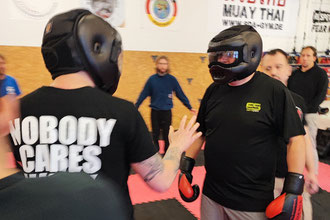
The OODA Loop, a decision-making model developed by military strategist John Boyd, is a powerful tool for personal protection. OODA stands for "Observe," "Orient," "Decide," and "Act." Originally designed to analyze military decision-making, the model is now applied across various fields, from business to personal self-defense.
The OODA Loop is rooted in cognitive processes that are critical in high-stress and dynamic situations. It outlines the decision-making cycle that individuals navigate in rapidly changing environments.
The Four Phases of the OODA Loop:
- Observe: Perception of the environment through the senses. This phase is influenced by factors such as attention, perception, and sensory input processing.
- Orient: Integration of information with past experiences, values, and beliefs. Cognitive processing plays a key role in this phase.
- Decide: Selection of a course of action based on the interpretation of the situation.
- Act: Execution of the chosen action, which subsequently feeds into the next observation phase.
The OODA Loop is not linear but circular. Errors in any phase can disrupt the entire cycle, which can have critical consequences in high-stress situations.

In self-defense training, the OODA Loop can be instrumental in improving both mental and physical reactions. Since attacks are often unpredictable and chaotic, the ability to quickly observe, orient, decide, and act is critical.
-
Observe in Self-Defense
Objective: Sharpen environmental awareness and identify potential threats early.
Training: Exercises to enhance situational awareness, such as role-playing scenarios where participants must identify threats in simulated environments.
-
Orient in Self-Defense
Objective: Quickly assess the meaning of observed information.
Training: Scenario-based exercises incorporating diverse cultural contexts, behavioral patterns, and the analysis of nonverbal communication.
-
Decide in Self-Defense
Objective: Make rapid and effective decisions to protect oneself.
Training: Decision-making drills under time pressure to improve reaction speed and cognitive resilience.
-
Act in Self-Defense
Objective: Efficiently execute the chosen action, such as escaping, verbal de-escalation, or physical defense.
Training: Practical exercises combining physical techniques with mental preparation to enable swift reactions in realistic scenarios.
Stress and anxiety can significantly impair the functionality of the OODA Loop. Research shows that stress slows cognitive processing and hinders decision-making. To counteract this, self-defense training should integrate stress management techniques such as:
- Breathing Exercises: Promote calmness and mental clarity.
- Mental Rehearsal: Visualization of scenarios to solidify response options.
- Progressive Exposure: Gradual increase of stress levels in training situations.
Incorporating the OODA Loop into self-defense training provides a structured approach to enhancing cognitive and physical responses to threats. By teaching participants to quickly observe, orient, decide, and act, they can operate more confidently in dangerous situations. When supplemented with stress management techniques and realistic scenarios, the OODA Loop becomes a central element of an effective self-defense program.

Kommentar schreiben